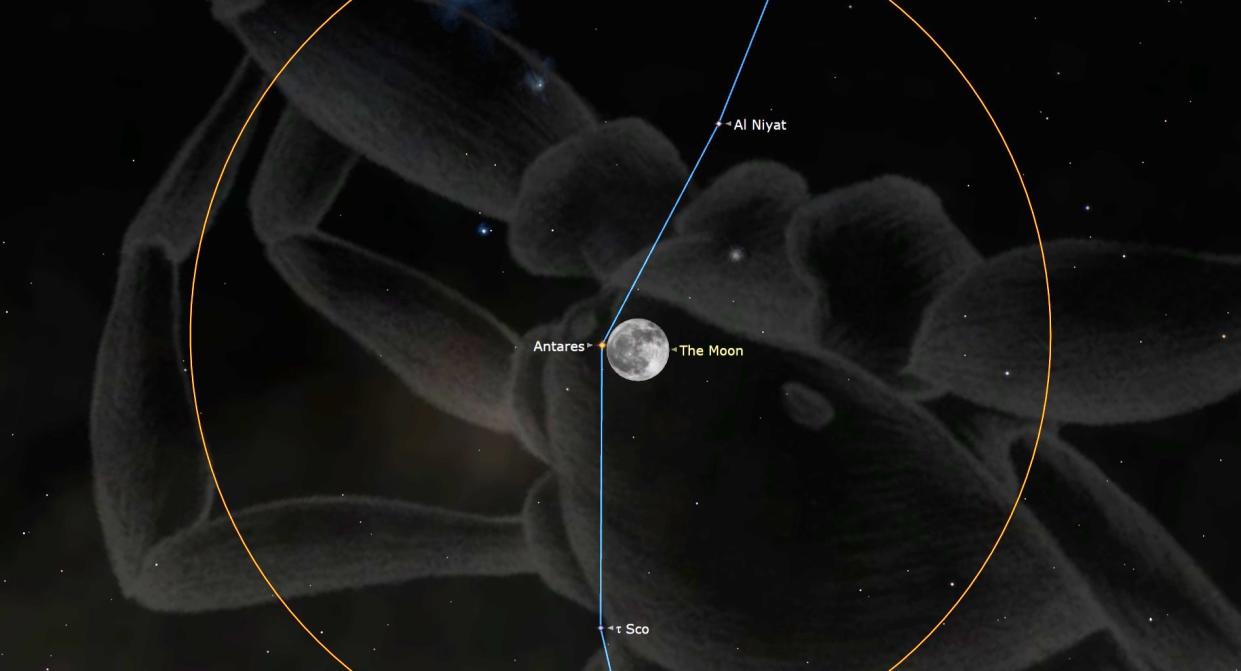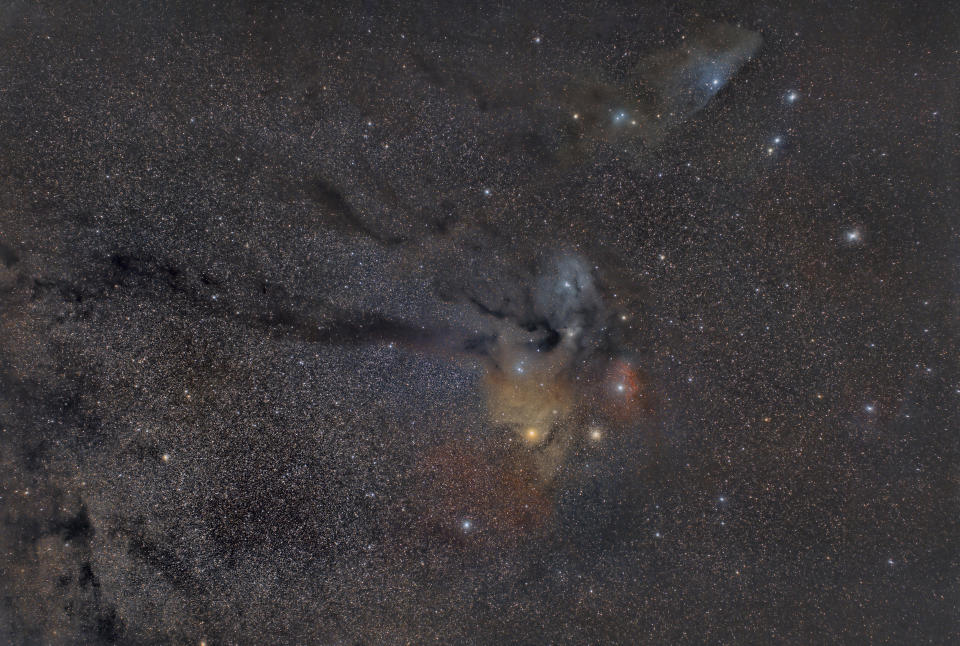How to watch bright red star Antares disappear behind the moon on May 23

For the third time this year, the bright red star Antares will be occulted or hidden by the moon on Thursday, May 23.
The first occasion came on Jan. 8, involving a thin waning crescent moon in the morning twilight sky and visible primarily over the western U.S. Then, on March 5, a last quarter moon covered Antares, again during the early hours of the morning, mainly favoring the southern and southeast U.S.
This upcoming stellar eclipse will differ from the first two, in that the moon will be almost full and that Antares will be covered during more convenient evening hours. As for the zone of visibility, anywhere south of a line running from near London, Ontario to Avalon, New Jersey will see Antares vanish behind the moon.
Related: May full moon 2024: The Flower Moon crosses the Scorpion's Heart
Anywhere north of that line will see the moon skim just below the star – almost grazing the moon’s limb for Philadelphia (at 9:50 p.m. EDT), a near miss for New York (9:55 p.m. EDT), and merely a close call for New England.
For most of the central and western U.S., the event will have already taken place before darkness falls and prior to moon rise; when they first come into view for these regions, Antares will be closely positioned to the west (right) of the moon.
TOP TELESCOPE PICK:

Want to see Antares or any other stars up close? We recommend the Celestron Astro Fi 102 as the top pick in our best beginner's telescope guide.
Across the southeastern U.S, Antares will slip behind the moon’s eastern (left) limb during evening twilight, but will emerge from behind the moon’s narrow dark limb after nightfall. For locations as far west as a Sault St. Marie to San Antonio line, the disappearance of Antares occurs before moonrise, but the star’s reappearance will be available shortly after the moon appears above the east-southeast horizon.
Other locations that will see the moon cross paths with Antares include Central America, the northern half of South America and parts of western and central Africa.
In the table below, we provide a listing for ten selected cities as to when Antares will disappear and later reappear from behind the moon. If a time is left blank, it is because the moon has not yet risen.
For a more comprehensive timetable (in Universal Time) which covers 658 locations, including a map of the occultation zone, go to:
http://www.lunar-occultations.com/iota/bstar/0524zc2366.htm all courtesy of the International Occultation Timers Association (IOTA)
Bright moon will be problematic
The moon will officially turn full during the late morning hours of Thursday, May 23 with the occultation scheduled to occur about 13 hours later. To the casual observer, it will still appear that the moon is "full" (100% illuminated), but in reality, there will be a very narrow – less than one-half of one percent – sliver of darkness along the moon’s western (right) limb.
So, as was the case with the previous two Antares occultations, this upcoming event will see the star emerge from behind the moon’s dark limb. But unlike the two previous encounters, in which the moon was either a narrow crescent or a half phase, our May Antares lunar interaction will involve a moon that is practically full.
So, while you could have been able to readily see Antares "pop" back into view from behind the moon's dark, unilluminated portion with just your eyes alone on the two previous occasions, for this upcoming event you most definitely will need a telescope or at the very least, a pair of binoculars because of the moon’s overwhelming brilliance.

Watch for the faint companion
With Antares reappearing from behind the moon's dark limb, also means that there is an opportunity to catch a fleeting glimpse of its small companion star. In Burnham's Celestial Handbook, Volume 3 (Dover Publications, Inc. 1978), it is noted that: "Normally, when seeing conditions are good, it (Antares' companion) appears quite plainly in a 6-inch telescope as a little spark of glittering emerald, almost drowned out in the blazing ruddy light of the giant Antares."
At magnitude +5.4, this star (known as Antares B) appears about 1/50 as bright as Antares itself and is situated 2.7 arc seconds west of Antares. As such, during occultations when Antares is about to reappear from behind the moon’s dark limb, Antares B emerges first, five seconds before Antares itself.
The color of Antares B actually is closer to bluish-white or white; the emerald green color is more likely an illusion due to the direct contrast with the ruddy color of Antares. But without Antares as a comparison, the true hue of its companion shows itself trending toward bluish or white in coloration.
Next time?
Occultations of Antares occur in a monthly series lasting for at least several years. The current series began in August 2023 over North America and will conclude in August 2028 over central Asia. Unfortunately, the upcoming occultation of Antares will be the last one in the current series that will occur at night, or in twilight for any part of the U.S.
All of the remaining Antares occultations will either take place during the daylight hours over North America or primarily for regions to the south of the equator. After 2028, the next series of Antares occultations will not commence until March 2042.
Joe Rao serves as an instructor and guest lecturer at New York's Hayden Planetarium. He writes about astronomy for Natural History magazine, the Farmers' Almanac and other publications

